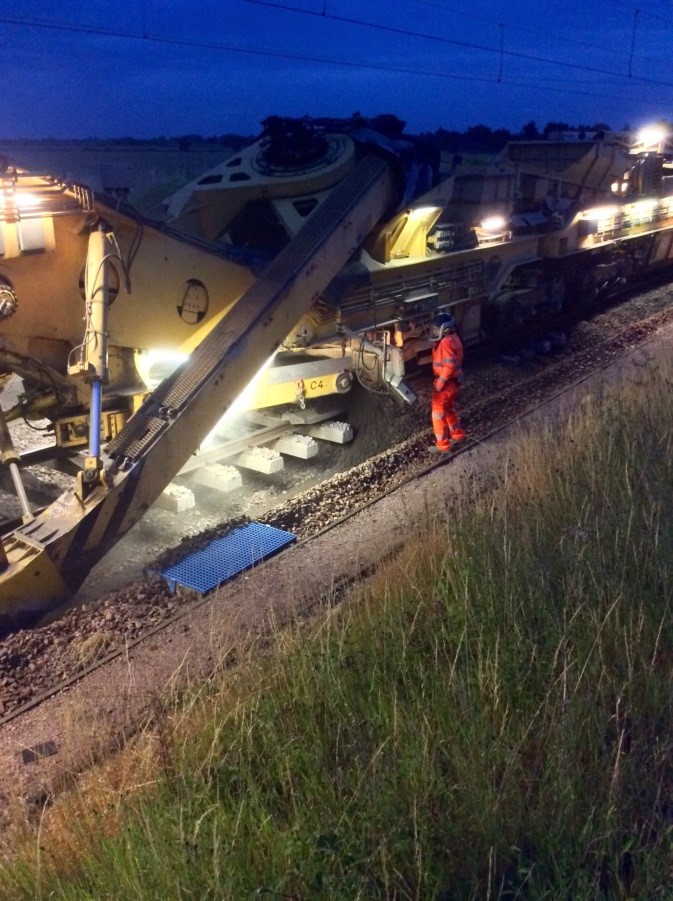High Output Ballast Cleaning System Reduces Waste
Company - Network Rail, Infrastructure Projects Track
Due to the high volume (and cost) of ballast, Network Rail aims to reuse as much of it as possible, reducing virgin material used.
How was this solved?
Since 2005, Network Rail has been operating a High Output Ballast Cleaning System (HOBCS).
The Ballast Cleaning System works by excavating ballast from beneath the track while holding the track in position. The machine passes the excavated material through large vibrating sieves, removing damaged ballast, before returning the larger pieces of ballast to the track. Finally, the machine then adds new ballast to make up for that removed.
The HOBCS has allowed us to reuse approximately 2.6 million tonnes of ballast over the past 10 years (as at 2017), providing both environmental and economic benefits.
What were the outcomes?
Reducing ballast waste is helping us to deliver our organisations sustainable development objectives. These include: zero waste to landfill, reducing carbon emissions and optimising resource consumption.
Specific project achievements are:
- Recycling materials and reducing the amount of ballast waste – ballast cleaners avoid the unnecessary disposal of reusable ballast, which is on average 40% of that excavated. Over the past 10 years, the HOBCS has allowed us to reuse approximately 2.6 million tonnes of ballast.
- Reducing embedded carbon emissions through a reduction in purchasing virgin materials.
- Minimising financial costs - £9 million in material savings compared with conventional methods of removing old ballast.
Principles
- Reducing our environmental impact
- Customer Driven
Organisation type
- Network Rail


